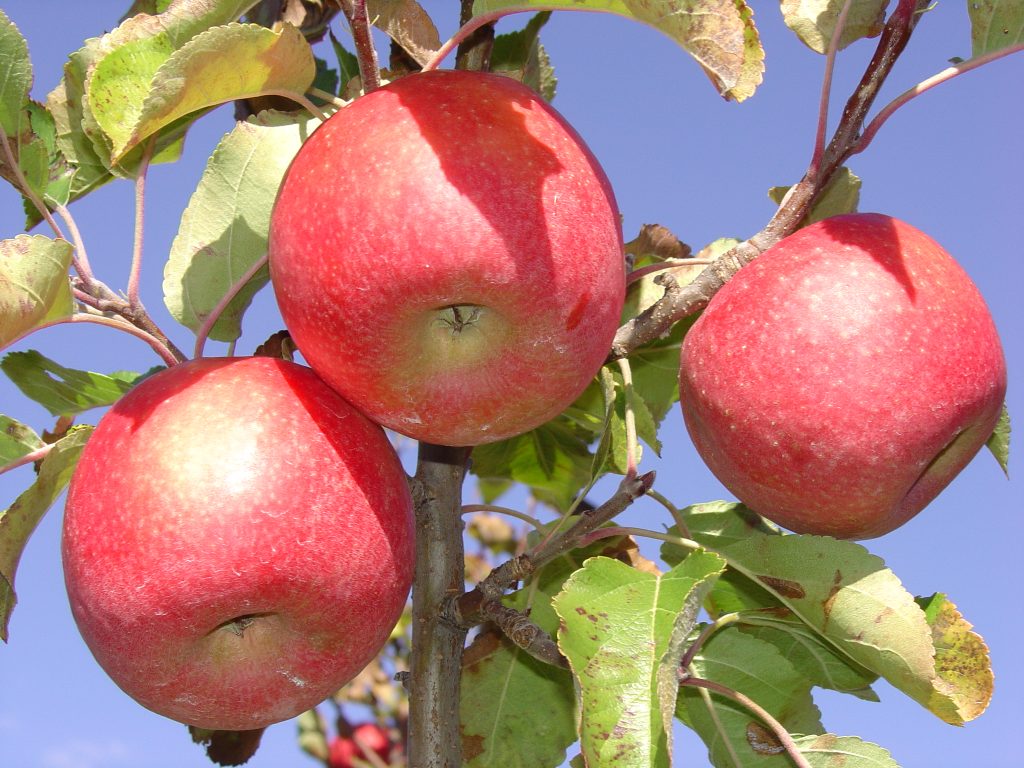
By Becky Griffin for CAES News
Americans recognize Arbor Day in April. However, Georgia celebrates Arbor Day on the third Friday of February each year because this is a better time to plant trees, giving roots time to grow before the heat and drought of our summer months.
Georgia’s Arbor Day falls on Feb. 19 this year and University of Georgia Cooperative Extension has many resources available to help you select, plant and maintain trees in your landscape.
Fruit trees in particular can add a nice backdrop to your garden, provide a bit of shade during the very hot summer days and, of course, produce delicious and nutritious fruit.
Be warned, however, that fruit trees can be a lot of work. There are a few points to think about before you decide to plant fruit trees in your home or community garden.
Find the Right Location
When planning fruit trees in limited space, location is the key. Fruit trees require at least six hours of sunlight to be healthy and to produce fruit. Eight to 10 hours of sun is optimal.
Also, although the shade a fruit tree provides during August may be welcome, you do not want to create unwanted shade on vegetable plots. Dwarf trees may be the best answer here. They are also easier to care for than full-sized trees. Remember that what you plant will get bigger and taller.
Maintenance Matters
Realize that fruit trees involve more care than vegetables. They may need to be properly pruned, thinned and fertilized regularly. Apples, peaches and plums will get diseases and insects in Georgia, and this must be addressed with the use of pesticides, fungicides and traps.
If you are avoiding using pesticides, growing traditional fruit trees such as apples, pears and peaches may not be for you. Instead, you may want to try other fruit crops such as blueberries and figs. UGA Extension Circular 1027-10, “Growing Fruits,” by UGArden Director David Berle and consumer horticulturist Robert Westerfield, is a great resource on these issues.
You May Need More Than One
Many trees need cross-pollination to produce fruit. You will need at least two different apple trees and, depending on the variety, you might need two different pear or plum trees.
Most peach trees self-pollinate, so one will still produce fruit.
Other Considerations
Many fruit trees are purchased as bare-root trees that have no soil or planting medium around the roots. For information on planting these, see UGA Extension Circular 1061, “Planting Your Bare-Root Fruit Tree.”
If these points haven’t scared you off, check out other Extension publications, including Circular 742, “Home Garden Pears,” and Circular 740, “Home Garden Apples.”
Another way to think about trees is their value to pollinators. There are many “trees for bees” and other pollinators that do well in our Georgia ecosystems. Did you know that several native trees are larval host plants for butterflies? Extension Bulletin 1483, “Selecting Trees and Shrubs as Resources for Pollinators,” is a wonderful resource for Georgia gardeners.
Contact your UGA Extension agent for more information on planting trees by calling 1-800-ASK-UGA1 or visiting extension.uga.edu/publications.
Story taken from UGA CAES Newswire.









